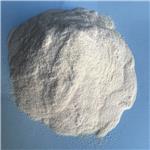Chemical Properties
clear liquid
Uses
Octanoyl chloride is used to produce adhesives. It is used as an acylating agent for a variety of compounds such as sugars (e.g. Sucrose, aromatic compounds (e.g. Anisole and monoglycerides.
Uses
Applications of octanoyl chloride include:
- Synthesis of (R)-2-propyloctanoic acid, a therapeutic agent for Alzheimer′s disease.
- Synthesis of a variety of N-n-octyl-D-gluconamide based organogels.
- Building 2-heptylbenzo[d]thiazole moiety to synthesize conjugated copolymer with fluorine, as cathode interlayer in inverted polymer solar cells (PSCs).
- Octanoyl chloride is one of the essential precursors in the total synthesis of (?)-mandelalide L, a marine macrolide that display significant cytotoxicity against human cancer cell lines.
Preparation
Diphosgene (108.8 g) was added to a mixture of octanoic acid (144.2 g) and DMF (1.5 L) at 70 C°. The mixture was left to stand for 1 h, and then nitrogen was bubbled through it for 30 min at 100 C° to give 96.9% of octanoyl chloride (purity 99.99%). Benzoyl chloride and terephthaloyl chloride were similarly prepared.
General Description
Clear colorless to straw-colored liquid with a pungent odor.
Air & Water Reactions
Reacts vigorously with water to form HCl and caprylic acid. Insoluble in water.
Reactivity Profile
Octanoyl chloride is incompatible with bases (including amines), water, alcohols, and with oxidizing agents . May react vigorously or explosively if mixed with diisopropyl ether or other ethers in the presence of trace amounts of metal salts [J. Haz. Mat., 1981, 4, 291].
Fire Hazard
Octanoyl chloride is combustible.





